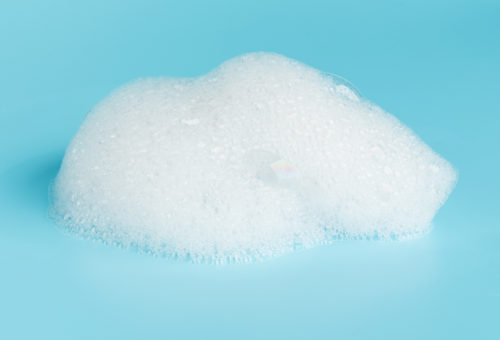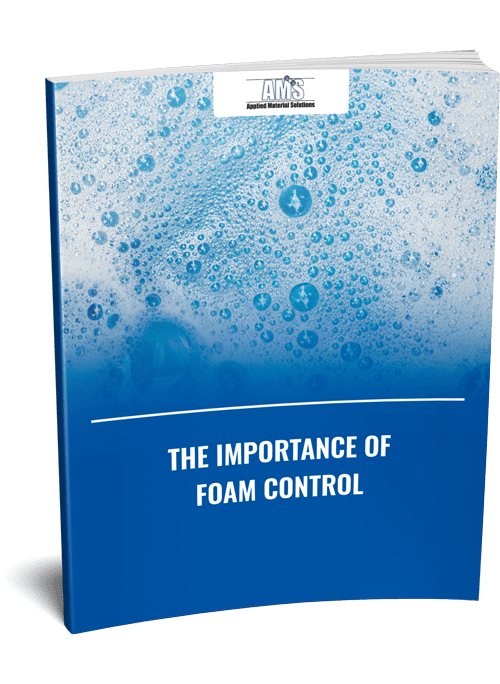Industry Spotlight: Wet & Dry Corn Milling for Fuel Ethanol Production
Comments Off on Industry Spotlight: Wet & Dry Corn Milling for Fuel Ethanol ProductionFoam can cause problems in many industrial processes. That’s why industry professionals utilize antifoams and defoamers to mitigate foam production and accumulation. In the renewable fuel sector, these products are commonly utilized in ethanol production operations since one of the ways the product is created is the corn milling process, which is susceptible to foam-related issues.
The Importance of Antifoams and Defoamers for Fuel Ethanol Production by Mill Type
Foam control solutions play a critical role in many fuel ethanol production operations. The corn milling process—i.e., the process used to make fuel ethanol—can be divided into two primary methods: wet milling and dry milling. Both can experience issues with foam.
- During wet milling operations, the corn is soaked in a slurry, ground, and separated. The separation process can lead to the generation of foam, which can impact efficiency and product yield. Foam can also hinder the fermentation stage. The formation of bubbles during fermentation takes up volume in the vessel used for the ethanol, and could even cause displacement and product loss. During the distillation phase, any remaining foam bubbles can negatively affect process efficiency. For these reasons, antifoams and defoamers are regularly used for wet milling operations.
- During dry milling operations, foam control products are typically utilized during clean-in-place (CIP) processes. Other key uses include the yeast propagation phase and during water treatment.
Considerations for Choosing the Right Antifoam or Defoamer
There are many antifoams and defoamers available for addressing foam and entrained air within the fuel ethanol industry. While this broad selection makes it possible for a plant owner or manager to choose a solution tailored to their unique needs, it can also make it difficult to find the right product. Below, we highlight some of the questions you should ask yourself when evaluating your foam control options to ensure the one you select meets your requirements and restrictions.
- What regulatory specifications/standards—if any—should the product meet? (e.g., food-grade/feed-grade/kosher)
- Will this product compromise the process? (e.g., the viability of yeast during the fermentation process)
- Can this product cause deposit issues?
- Is this product cost-effective?
Antifoams and Defoamers From Applied Material Solutions
Unwanted foam can cause a variety of problems during fuel ethanol production operations. If you’re experiencing foam-related issues in your wet or dry corn milling processes, Applied Material Solutions is here to help. We manufacture a range of antifoams and defoamers for the renewable fuel industry. We can customize your product solution to meet the specific needs of your plant.
By utilizing our foam control additives, you can benefit from:
- Industry-proven chemistries that do not harm yeast cell viability
- Reduced chemical costs
- Increased profits
- Improved ethanol yields
- Enhanced on-time delivery, consistency and reliability
For additional information about our foam control products or assistance identifying the right antifoam or defoamer for your wet/dry milling process, contact us today.
Antifoams for Ethanol Production


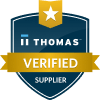
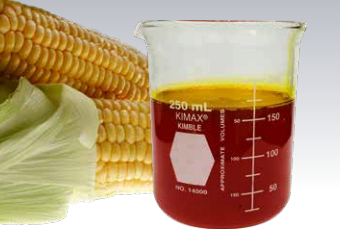
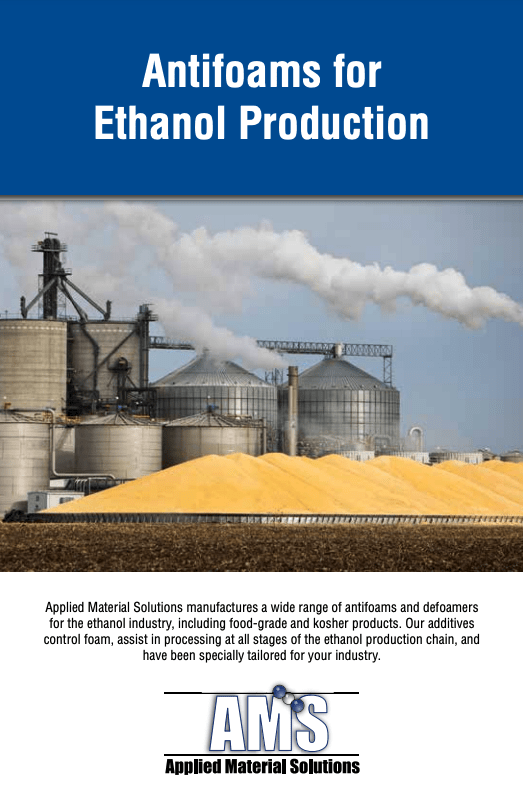
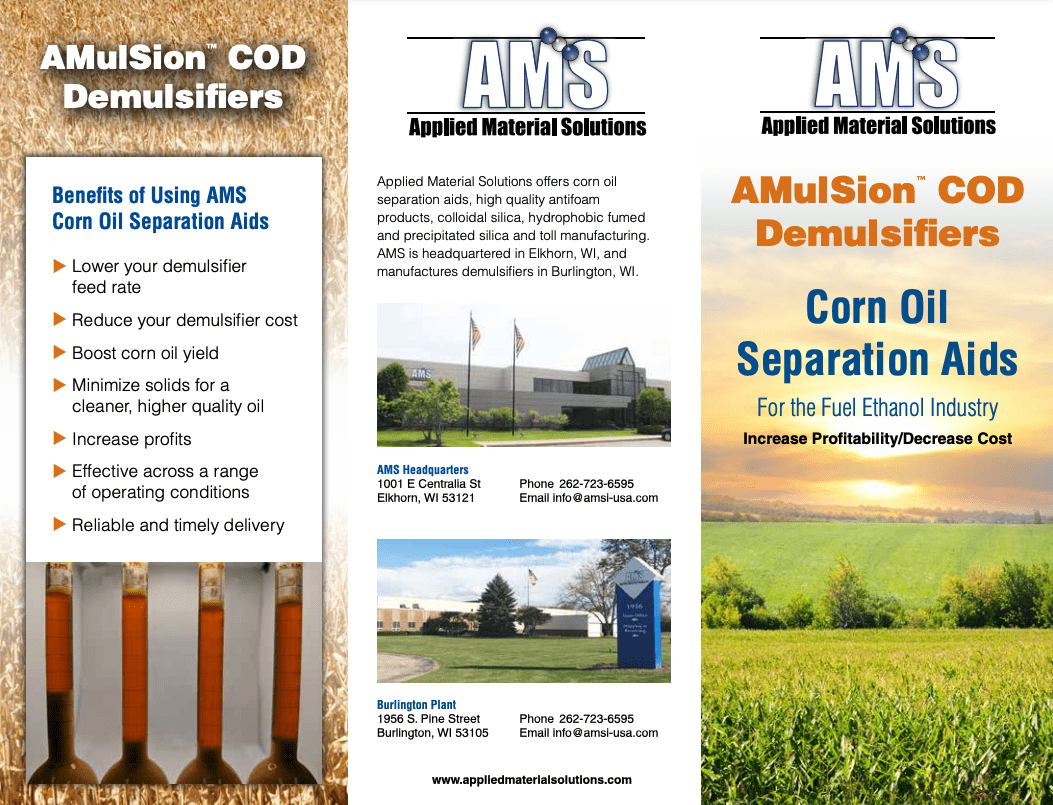

 Many types of foods and ingredients foam during the production process. If foaming is permitted, it can alter the product’s appearance, manufacturing time, quality or performance. Food-grade antifoams and defoamers are used to prevent, control, remove or mitigate foam to ensure high-quality, consistent production.
Many types of foods and ingredients foam during the production process. If foaming is permitted, it can alter the product’s appearance, manufacturing time, quality or performance. Food-grade antifoams and defoamers are used to prevent, control, remove or mitigate foam to ensure high-quality, consistent production.
